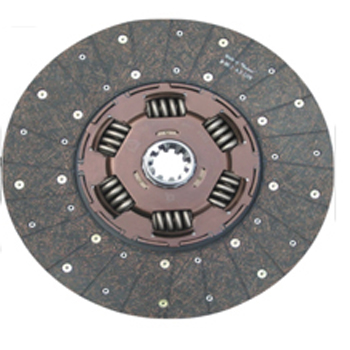Clutch Disc
A Clutch Disc is a part of the transmission of a car. It sends torque to the wheels and lowers noise from the drivetrain. It has a spring-loaded hub and a spline that connects it to the transmission input shaft. It also has friction material that is used to control how the clutch engages and disengages. The clutch chatter is cut down by the springs in the clutch disc.
- 20 Years Experience
- TS16949 Certification
- 100% Full Inspection Before Packaging.
Central Slave Cylinder & Pneumatic Release Bearing Supplier & Manufacturer
Provide complete clutch plate | discs Technical Tech Assistance.
Make an Enquiry
+ 86-137 5815 0719
Cell / Whatsapp
Clutch Disc
Clutch disc, also known as the clutch plate, is a circular plate. In order to realize the separation required during gear shifting, Orient clutch discs could connect the vehicle’s engine and transmission.

Clutch Plate
Hydraulic Throwout Bearing
Pneumatic Release Bearing
Clutch Release Bearing
Clutch Disc
Clutch Cover
Belt Tensioner Pulley
Clutch Disc
clutch disk | clutch plate assembly.
What Is Clutch Disc?
A clutch is a device used to link the power source to the drivetrain of a car. This device allows the engine to spin independently from the wheels while cutting the engine output when the vehicle comes to a complete stop.
Manual transmissions are coupled to dry clutches while automatic transmissions use wet clutches. In this document, we’ll discuss the dry clutch disc used in manual transmissions.
This type of clutch disc produces less shock when engaging and less affect on the drive train when replacing it.
A clutch disc is more than just a round disc that transfers torque from the engine to the wheels. It requires complex design elements to ensure smooth engagement, minimize drivetrain shock, and have low inertial mass.
These features are achieved through a series of compromises. We’ve included photos of different types of clutch discs so that you can get a better understanding of what’s involved in the production of these products.
Our goal is to make your life easier. So, what is a clutch disc?
While there are several different types of clutch discs, there are a few common problems to look for when buying a new one. For one, resurfacing the flywheel will improve clutch performance.
This involves cutting a new surface on the flywheel and removing only the material that’s necessary to create a flat surface. Some vehicle manufacturers recommend replacing the flywheel if the condition of the old flywheel is questionable.
The third type of clutch disc is made from metallic materials. These are similar to organic discs, but can handle higher temperatures and more torque. They are made of metal or ceramic dust.
They are lightweight, allowing for easier engagement even at high engine revolutions. Their high temperature resistance and high burst strength are both characteristics of semi-metallic clutch discs. The final type of clutch disc is made by fusing a metal powder into a mold.
The clutch disc is the primary component of the gearbox. In a single-plate clutch, it has friction material on both surfaces.
In addition to friction material, it has internal splines, which limit axial travel along the gearbox driving shaft.
These splines dampen torsional vibrations and variations in driving torque. The disc plate itself is a steel plate between the friction plate and flywheel. It is covered with a series of facings on its surface to increase its friction.
Clutch Disc
Tag: clutch plate, clutch plates, clutch disk,clutch discs,plate clutch,disc clutch,clutch plate assembly,clutch plate cover assembly,clutch disc replacement,automatic transmission clutch disc,parts of a clutch plate,clutch and clutch plate,clutch disc assembly,clutch plate components,disc plates for sale,clutch plate for sale ,clutch plate parts,clutch disc
